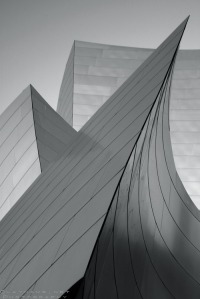In early 2009 – a year after I purchased my infrared-sensitive Fuji IS-1 – I stumbled (online, so it really didn’t hurt) across someone local to me that performs IR-conversions on cameras other than Nikon and Canon. Well, actually I found two people who would do it but one guy is less than an hour from where I live and the other I would have had to ship the camera out of state.
Clarence Spencer of Spencer’s Cameras will perform IR-conversion on just about any DSLR so I gathered up my circa 2005 *istDS (yeah, I know: stupid model name…Pentax left it behind some time ago) and paid a visit to Mr. Spencer. There are three basic ways you can have the conversion performed: 1) remove the IR blocking filter and place a 720nm filter over the sensor, 2) remove the IR blocking filter and place an 830nm filter over the sensor, or 3) remove the IR blocking filter and place a clear glass over the sensor and use IR filters on your lenses. I opted for option #1.
Yes, this renders the camera useless for visible light photography (you can, btw, always have this conversion reversed) but this was an older camera that sat on the shelf and didn’t even act as a backup anymore. Additionally, with the IR filter over the sensor, I can now hand-hold for most of my shots. But option #3 seems more flexible, non? Actually, non. While ostensibly you could use the camera for visible light photography, you would need to buy a “hot filter” for your lens to counteract the negative color cast of the infrared bandwidth. And, for IR work, you will generally need to focus without the IR filter, then mount the filter on the lens, then take the shot. And, you’ll need that tripod again…and a set of IR filters for your different lens diameters (or at least step-up rings). I call none of this very flexible.
Pretty quickly this converted DSLR became my new go-to IR camera. It is only 6mp but being an APS-sized sensor meant that compared to the Fuji I should have much less noise in my images. And, I do. I very rarely ever have to run Neat Image and the clarity and sharpness of the images I am capturing amazes me. As I mentioned before, 99+% of the time I convert my IR images to B/W and the converted camera combined with post-processing via Nik Software’s Silver Efex Pro really became a winning combination for me.
I was having so much fun with this camera that pretty quickly I decided to take another sitting-on-the-shelf DSLR – my Pentax K100 – and have it converted with the deeper IR filter of 830nm. I was hoping for richer blacks and whites to pop even more. For various reasons it took me longer to have the conversion made but this summer I started shooting with the 830nm converted K100. This model Pentax was the first with built-in (the body) Shake Reduction technology and because the sensor is now getting no visible light and is much deeper in the IR bandwidth, the Shake Reduction is giving me a much-needed extra 2-4 stops hand-held.
These two IR cameras are now always with me and there have even been days (two most recently in NYC for instance) where I never even pulled my K20 (visible light) camera out of the bag. I still use Sliver Efex pro for many of the 720nm images but have developed a taste for duo- or tri-tones with the images the 830nm camera produces. This combination yields some very nice slightly blue-cast photos that are subtle color-wise but feel different from a typical B&W. I’m very much liking where I am IR-wise, but it’s not all roses though…
Hot spots have been greatly reduced and are now easily managed, but I have found that wide-angle zoom lenses are anathema to these conversions. Focus and image smearing are real issues with three zooms that I like for landscapes (or cityscapes for that matter): the Sigma 10-20mm, Sigma 12-24mm and even my 18mm-50mm (that latter is only a problem at the widest focal length). Whether manual or auto focusing the images are soft at best and smeared at worst. And, not just on the edges, but side to side, top to bottom. After a bit of research, it does appear that super wide angle zooms can be prone to this problem when shooting IR. I have three primes: a Pentax 20mm, a Sigma 14mm and Sigma 15mm Fisheye that yield nice, sharp images. (All three of these lenses are designed for full-frame cameras so the edges might be soft but I just wouldn’t know it.)
Even with those limitations, discovering digital infrared photography has added a new dimension to my portfolios. People can’t always tell what is different about an image but they know something is. It feels unique, mysterious even, black and white but not quite. When I tell them, as I always do, that they are infrared images, there is often an ‘aha’ moment. Then, perhaps, the question comes: but how do you know what exactly will look good in infrared? That’s easy, I tell them…I see in infrared!









No comments:
Post a Comment
Note: Only a member of this blog may post a comment.